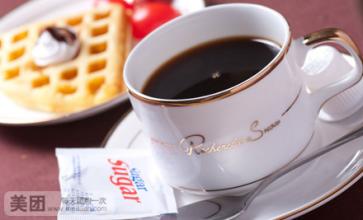Description of Coffee Flavor of Katim Coffee in Yunnan Province, China
Introduction to the method of describing the Flavor of Coffee beans from Katim, Yunnan, China
Selection of suitable forest land
The annual mean temperature is 19-21 ℃ years, the accumulated temperature of annual ≥ 10 ℃ is more than 6800 ℃, the coldest monthly mean temperature is more than 11.5 ℃, the absolute lowest temperature is above 1 ℃, the coldest monthly mean temperature is ≥ 11.5 ℃, the monthly mean temperature of ≤ 13 ℃ is more than two months, the extremely lowest general year is more than 0 ℃, and some years appear areas of-1 ℃ or short-2 ℃. The annual rainfall is ≥ 1100mm below 1200m above sea level, and the soil should be fertile loam, loose soil, good drainage, PH value 66.5and slope less than 25 °, so as to avoid planting in the depression where cold air is easy to deposit.
Forest land reclamation
Coffee is a long-term economic crop, woodland reclamation must be long-term planning, good planning, before reclamation must do a good job of road, shed, fertilizer pool design. When reclaiming woodland, shade trees should be selected to make the coffee woodland after planting have 30% shade, and then adjust to 20%. In planning and design, we must do a good job in the planning and reclamation of horizontal terraces and terraces, which is not only the primary task of soil and water conservation, but also an important work to bring convenience to field management after planting. Trenching, with the specification of upper mouth width × depth × bottom width 60 × 50 × 40cm, will be reclaimed before the end of November to the end of March of the following year.
Apply sufficient base fertilizer
3000-4000kg high quality organic fertilizer per mu, phosphate fertilizer 80-120kg returned to the hole 15 days before planting (organic fertilizer, phosphate fertilizer and soil were mixed well and applied into the planting ditch).
Strong seedling planting
Select seedlings with robust growth, close to branches or 3 pairs of branches, stout main stem, stem diameter above 0.4cm, and no curved root. The irrigated land can be planted in advance (February-March), and the planting row spacing depends on the topographic environment, usually planting 330mi 420 plants per mu.
Water and fertilizer management
This variety is a variety with high and stable yield. The results of trial planting in different ecological areas show that as long as it is planted in accordance with high-yield cultivation techniques, a higher yield will be obtained, with an average yield of more than 150 kg per mu and a small area of more than 400 kg.
1. The state-run Lujiang Farm in Baoshan City planted 12.6 mu in March 1991. The land is unshaded and irrigated once in the dry season. The level of management and fertilization is above. In 1993, the average yield per mu was 75 kg in 1993, 350 kg in 1994, 225 kg in 1995, 217 kg in 1996, and 36% higher than Tiebika and Bobang (160 kg per mu).
2. Yunnan Dehong Tropical Agricultural Science Research Institute 1991 planted 30 mu with no shade and anhydrous irrigation, with a medium level of fertilization and management. the average yield per mu was 304.3 kg in 1993, 294 kg in 1994, 222.5 kg per mu in 1995, 273.6 kg per mu in 1995 and 1996, and 82% higher than that of S288 (S288).
3. The covered field coffee base of Ning'er County Coffee Company planted 50 mu in July 1998. the site environment was unshaded, the level of management was medium, and the level of fertilization was low, but the soil fertility was high. Since 2000, the average yield per mu was 285kg in 2001,2002,340kg in 2002,293kg per mu in 2003,306kg per mu in three years, 53% higher than PT and 91% higher than P4 (PT). P4 average yield per mu is 160 kg)

Important Notice :
前街咖啡 FrontStreet Coffee has moved to new addredd:
FrontStreet Coffee Address: 315,Donghua East Road,GuangZhou
Tel:020 38364473
- Prev

Price and Flavor description of El Salvador Pacamara Coffee beans with High Alcohol content
El Salvador boutique coffee beans Pacamara introduced varieties of varieties were first cultivated by El Salvador, El Salvador is still the main production area, in addition, there are many Chinese and American countries, such as Nicaragua and so on. Variety flavor keywords: chocolate chocolate, high alcohol big body, balanced balance. Pacamara Coffee was found in El Salvador in the 1950s by Pacas P.
- Next

The Brand characteristics of Coffee species and Tree species in Ethiopia introduction to the taste treatment method in manor producing areas
Although Ethiopian coffee beans say that ET is the hometown of coffee, the earliest commercial record of coffee cultivation is in Yemen, Yemen. A. D. 575. HoHo~ calculated in this way, the history of the discovery of ET should also be in the 6th century AD. We have to go back to our lucky Mr. Cuddy again. In other words, after the magical Cuddy discovered the miraculous coffee, he brought it to the same.
Related
- Detailed explanation of Jadeite planting Land in Panamanian Jadeite Manor introduction to the grading system of Jadeite competitive bidding, Red bid, Green bid and Rose Summer
- Story of Coffee planting in Brenka region of Costa Rica Stonehenge Manor anaerobic heavy honey treatment of flavor mouth
- What's on the barrel of Blue Mountain Coffee beans?
- Can American coffee also pull flowers? How to use hot American style to pull out a good-looking pattern?
- Can you make a cold extract with coffee beans? What is the right proportion for cold-extracted coffee formula?
- Indonesian PWN Gold Mandrine Coffee Origin Features Flavor How to Chong? Mandolin coffee is American.
- A brief introduction to the flavor characteristics of Brazilian yellow bourbon coffee beans
- What is the effect of different water quality on the flavor of cold-extracted coffee? What kind of water is best for brewing coffee?
- Why do you think of Rose Summer whenever you mention Panamanian coffee?
- Introduction to the characteristics of authentic blue mountain coffee bean producing areas? What is the CIB Coffee Authority in Jamaica?

